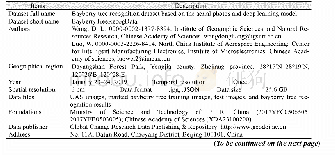《Table 1–Summary of total PCB discharges calculated based on the annual PCB loading model.》
 提示:宽带有限、当前游客访问压缩模式
提示:宽带有限、当前游客访问压缩模式
本系列图表出处文件名:随高清版一同展现
《Distribution of polychlorinated biphenyls in effluent from a large municipal wastewater treatment plant: Potential for bioremediation》
After the production of PCBs was banned in the 1970s in USA,the amount of PCBs present in the environment was expected to decrease,since existing PCB sources would be eliminated(Zhang et al.,2004).The results from this study showed that current sources still exist and are discharged to a WWTP in the wastewater influent and subsequently discharged in the effluent from a WWTP.The continuous effluent contributed the major PCB discharge(80.7%–94.7%)of total PCB discharge from both intermittent effluent and continuous effluent over the five-year period(Fig.2).A significantly(p<0.01)larger contribution(1821.4 g)came from the continuous effluent discharge compared to the stormwater overflow(260.3 g)thus showing that the sources of PCBs in the effluent originate from the wastewater and not from the stormwater contribution in the combined sewer system(Table 1).A similar result of total PCBs discharge(1.65 g PCB/day)during dry weather was observed from a WWTP located in Philadelphia North East discharging to the Delaware River(Hansler et al.,1998).This PCBs discharge was estimated to 602.3 g/year,which was comparable to the results from this study.
| 图表编号 | XD0033523700 严禁用于非法目的 |
|---|---|
| 绘制时间 | 2019.04.15 |
| 作者 | Ran Jing、Soliver Fusi、Alisha Chan、Staci Capozzi、Birthe V.Kjellerup |
| 绘制单位 | University of Maryland at College Park,Department of Civil and Environmental Engineering、University of Maryland at College Park,Department of Civil and Environmental Engineering、University of Maryland at College Park,Department of Civil and Environmental |
| 更多格式 | 高清、无水印(增值服务) |
查看“Table 1–Summary of total PCB discharges calculated based on the annual PCB loading model.”的人还看了
-

- Table 1 Metadata summary of“Monthly and yearly VIIRS/DNB nighttime light data based on cubic Hermite model in Beijing-Ti
-

- Table 1 Metadata summary of“Monthly and yearly VIIRS/DNB nighttime light data based on cubic Hermite model in Beijing-Ti
-

- Table 1 Metadata summary of“Bayberry tree recognition dataset based on the aerial photos and deep learning model”
-

- Table 1 Metadata summary of“Bayberry tree recognition dataset based on the aerial photos and deep learning model”





